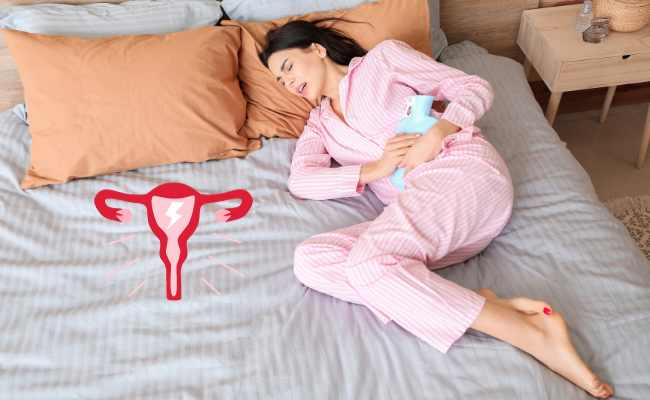How to Treat Premenstrual Syndrome?
- October 14, 2023
- No Comments

What is Premenstrual Syndrome (PMS)?
Premenstrual Syndrome (PMS) encompasses a variety of physical and emotional symptoms that individuals often encounter in the days leading up to menstruation. These symptoms, ranging from mood swings and irritability to bloating, fatigue, and breast tenderness, vary in intensity from person to person.
Commonly known as PMS, this condition manifests both emotionally, evoking feelings of irritability or depression, and physically, resulting in sensations like breast pain or bloating. Typically emerging one to two weeks before the menstrual period starts, these symptoms consistently recur at the same time each month.
Why Does PMS Occur?
The exact cause of PMS is not fully understood, but hormonal fluctuations during the menstrual cycle are believed to play a significant role. Changes in serotonin levels, which impact mood, and fluctuations in estrogen and progesterone levels are thought to contribute to the development of PMS symptoms.
How to Navigate PMS Symptoms?
- Symptom Tracking: Keeping a menstrual diary to track the timing and severity of symptoms can help individuals identify patterns and anticipate when symptoms may occur.
- Lifestyle Modifications: Adopting a healthy lifestyle can mitigate PMS symptoms. Regular exercise, a balanced diet, and adequate sleep contribute to overall well-being and can alleviate some symptoms.
- Dietary Changes: Some individuals find relief by reducing salt intake to alleviate bloating and avoiding caffeine and alcohol, which can contribute to mood swings and exacerbate symptoms.
- Stress Management: Practicing stress-reducing techniques such as yoga, meditation, and deep breathing can help manage emotional symptoms associated with PMS.
Treatment Options for PMS
- Over-the-Counter Medications: Non-prescription pain relievers like ibuprofen or naproxen can help alleviate physical symptoms such as cramps and headaches.
- Hormonal Therapies: Birth control pills or hormonal contraceptives can regulate hormonal fluctuations, reducing the severity of PMS symptoms for some individuals.
- Antidepressants: For those with severe mood-related symptoms, particularly if linked to serotonin levels, selective serotonin reuptake inhibitors (SSRIs) may be prescribed to alleviate emotional symptoms.
- Nutritional Supplements: Some studies suggest that calcium, magnesium, and vitamin B6 supplements may help reduce PMS symptoms.
Benefits of PMS Treatment
- Improved Quality of Life: Effective treatment leads to a significant improvement in the overall quality of life for individuals experiencing PMS. Reduced symptom severity allows for a more comfortable and enjoyable daily life.
- Enhanced Emotional Well-Being: Managing emotional symptoms through lifestyle changes, stress reduction, and, if necessary, medication can positively impact emotional well-being and interpersonal relationships.
- Increased Productivity: By addressing physical symptoms like fatigue and pain, treatment can enhance productivity and daily functioning during the premenstrual period.
- Empowerment Through Self-Care: Lifestyle modifications and self-care practices empower individuals to take an active role in managing their PMS. Understanding one's body and its responses contributes to a sense of control.
- Preventive Measures: Tracking symptoms and implementing preventive strategies, such as dietary adjustments and stress management, can help individuals proactively address PMS before symptoms become severe.
Comments (0)